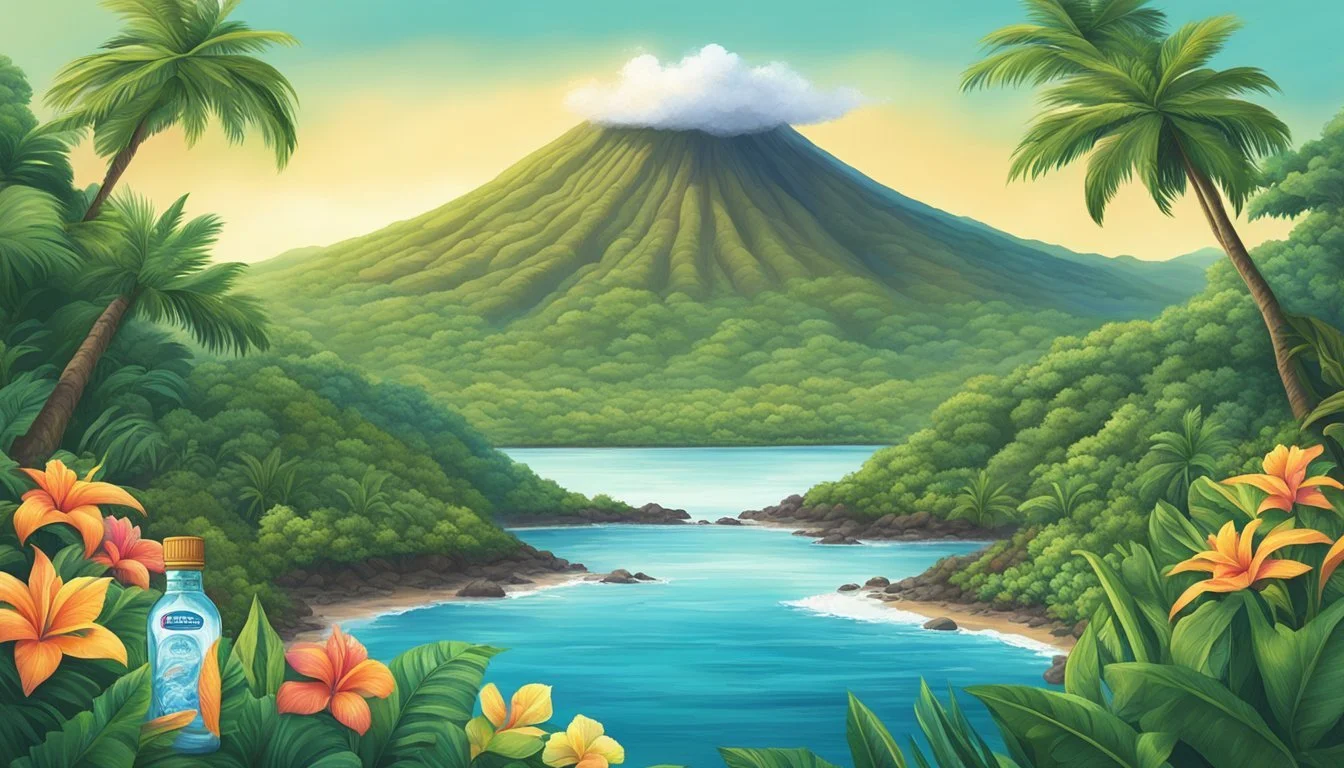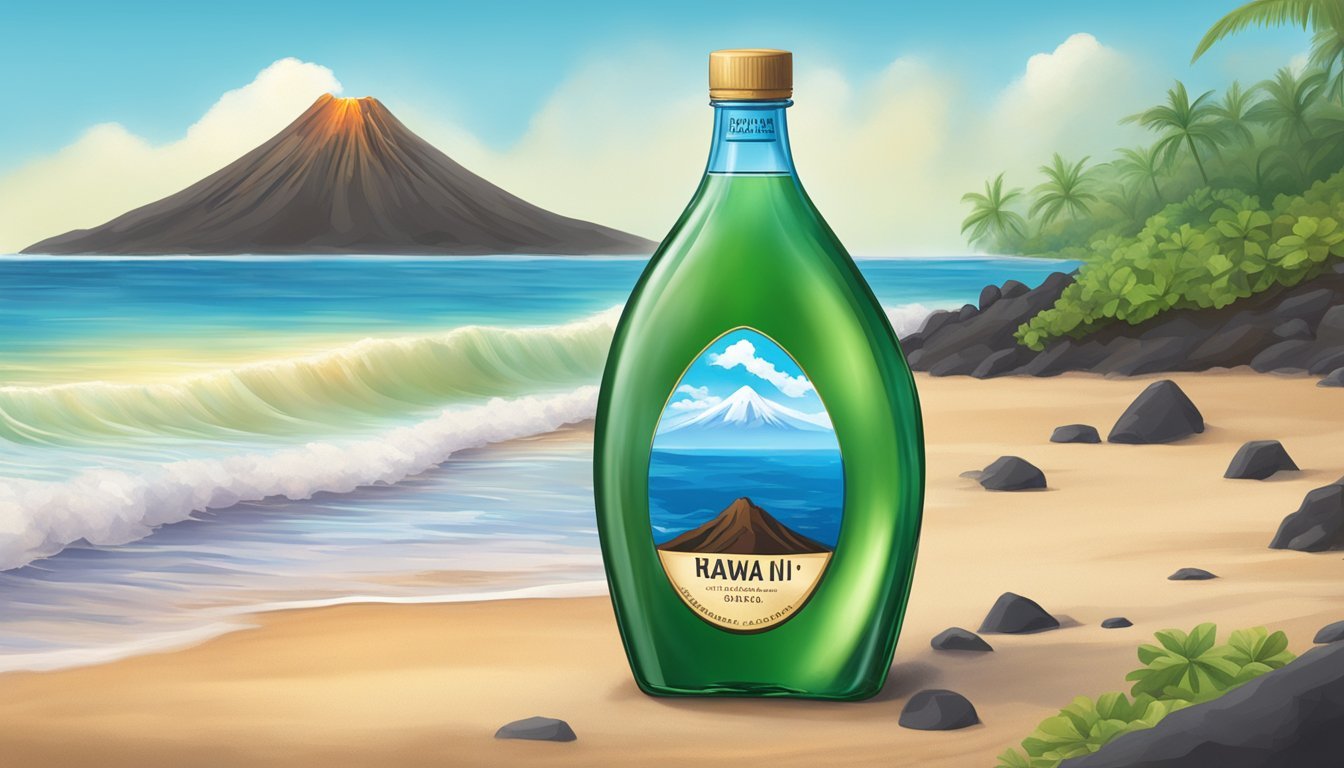Hawai’i Volcanic vs. Ramona
Which Bottled Water is Better?
When choosing between Hawai’i Volcanic and Ramona bottled water, it’s crucial to evaluate factors such as taste, alkalinity, and availability. Hawai’i Volcanic water boasts a naturally alkaline pH and is sourced from the rich volcanic regions of Hawaii. This brand often appeals to those seeking water that can help neutralize body acidity.
Ramona, on the other hand, is prized for its refreshing taste and accessibility. The popular brand is often easy to find and trusted for its consistent quality. Both brands promise unique benefits, but it ultimately comes down to personal preference and specific needs, such as pH levels and desired mineral content.
As you weigh your options, consider what attributes are most important to you in a bottled water brand. Whether it’s the volcanic purity of Hawai’i Volcanic or the wide availability and crisp taste of Ramona, choosing the right bottled water can enhance your hydration experience.
Understanding Bottled Water
Bottled water comes in various types and is regulated to ensure quality and safety. Knowing the differences and regulations helps in making informed choices.
Types of Bottled Water
Natural Spring Water is sourced from underground formations where water flows to the surface. It is typically collected at the spring or through a borehole tapping the underground formation.
Purified Water has been treated through processes such as distillation, deionization, or reverse osmosis to remove impurities. This type includes both Artesian Water, sourced from confined aquifers under pressure, and Mineral Water, which contains a specific amount of natural minerals.
Alkaline Water has a higher pH level than regular water, often achieved naturally through contact with rocks or artificially. Alkaline water proponents suggest benefits like neutralizing body acidity, but clear scientific evidence is limited.
Bottled Water Regulations
Regulations for bottled water vary by region but typically include standards for source protection, processing, bottling, and labeling. In the U.S., the FDA sets standards similar to those of the EPA for tap water, ensuring bottled water is safe to drink.
Bottled water must meet specific microbiological safety standards. Regular testing for contaminants like bacteria, lead, and other harmful substances is mandatory.
Labeling is regulated to prevent misleading claims. Terms like "Spring Water," "Purified Water," and "Artesian Water" are defined by regulatory bodies to ensure consumer clarity.
Origin and Source
Hawai’i Volcanic and Ramona bottled waters both draw from unique sources that contribute to their distinct characteristics. The geographical significance and natural filtration processes these waters undergo play crucial roles in defining their quality and benefits.
Geographical Significance
Hawai’i Volcanic water originates from the Big Island of Hawaii, specifically at the base of the Mauna Loa volcano. This location is considered one of the purest environments on Earth.
The water journey begins as snowmelt and rain which permeate through volcanic rock. This geological feature ensures the water remains uncontaminated and naturally pristine.
In contrast, Ramona’s source is in Southern California. While not as geographically renowned as Mauna Loa, Ramona benefits from a region known for its artesian wells. These wells tap into deep aquifers, accessing water stored underground.
Natural Filtration Process
The natural filtration process of Hawai’i Volcanic water involves it percolating through thousands of feet of porous lava rock. This journey not only purifies the water but also infuses it with essential minerals such as silica, which supports various health benefits like collagen synthesis and bone health.
Ramona’s water undergoes a thorough filtration process through artesian sand and gravel aquifers. Though the process is different, it aims to achieve a similar purity and mineral content.
The unique volcanic filtration of Hawai’i Volcanic water is distinct due to the porous volcanic rock of the Mauna Loa region, adding an extra layer of natural filtration that is hard to replicate. In comparison, Ramona’s artesian filtration focuses on tapping ancient underground water reserves.
Environmental Impact and Sustainability
Hawai’i Volcanic and Ramona take distinct approaches to eco-friendliness and sustainability. Each brand focuses on minimizing its environmental impact through various practices and initiatives aimed at conserving natural resources.
Eco-Friendly Practices
Hawai’i Volcanic sources its water from volcanic springs surrounded by bio-diverse forest preserves. This choice ensures the water comes from one of the purest environments on Earth. The company uses BPA-Free and RPET (Recycled Polyethylene Terephthalate) materials for packaging, focusing on reducing plastic waste. Efforts also include efficient production processes that minimize environmental harm.
Ramona adopts eco-friendly practices by using sustainably sourced materials. They prioritize biodegradable and compostable packaging, aiming to balance environmental impact with consumer convenience. Their production methods incorporate energy-efficient technology to reduce carbon footprints.
Sustainability Initiatives
Hawai’i Volcanic has sustainability at its core, engaging in multiple initiatives such as the Kokua Initiative, which focuses on community well-being and environmental conservation. Their efforts include contributing to clean water access and supporting educational programs that promote sustainability. These initiatives not only help the environment but also support local communities.
Ramona's sustainability initiatives revolve around responsible water use. They commit to balancing their water extraction by supporting various water replenishment projects. Additionally, Ramona partners with environmental organizations to push for broader conservation efforts, making a tangible impact on preserving water resources and promoting sustainability in the bottled water industry.
Health and Nutritional Benefits
Both Hawai’i Volcanic and Ramona bottled water offer unique health and nutritional benefits. This section will cover the mineral composition and hydration effects, with a focus on how these factors impact health and athletic performance.
Mineral Composition
Hawai’i Volcanic and Ramona water are rich in minerals that are beneficial to health. Hawai’i Volcanic is naturally filtered through volcanic rock, picking up minerals such as silica, calcium, magnesium, and potassium. Silica supports bone, hair, skin, and nail health and aids in collagen synthesis.
Ramona water, although less mineral-dense than Hawai’i Volcanic, still provides essential electrolytes like sodium and potassium which are crucial for cellular function and hydration. The electrolytes in both water types help maintain pH balance and support overall well-being.
Hydration and Athletic Performance
For athletes and active individuals, hydration is critical. Hawai’i Volcanic, with its naturally alkaline pH ranging between 7.6 and 8.2, can aid in neutralizing acidity in the body, potentially enhancing hydration and athletic performance. The alkaline nature helps in maintaining a balanced internal environment, which is crucial during intense physical activity.
Ramona water also contributes to proper hydration, though it’s not naturally alkaline. Its electrolyte content assists in rapid rehydration, which is vital for athletes after strenuous workouts. Both water options help replenish lost fluids, but Hawai’i Volcanic may offer a slight edge due to its mineral richness and natural alkalinity.
In summary, both Hawai’i Volcanic and Ramona bottled water provide valuable health benefits through their mineral and electrolyte content, supporting overall hydration and athletic performance.
Taste and pH Levels
In comparing Hawai’i Volcanic and Ramona bottled waters, it's crucial to consider their taste and pH levels. These elements play a significant role in consumer preference and overall product quality.
Alkaline vs. Neutral pH
Hawai’i Volcanic features a naturally alkaline pH, ranging between 7.6 and 8.2. This alkalinity is attributed to the water being sourced from volcanic wells, which also imparts essential minerals and electrolytes. The alkaline nature can lead to a smoother, less acidic taste, which many consumers find appealing.
Ramona, in contrast, typically maintains a neutral pH of around 7. This pH level aligns closely with that of pure water and is less likely to impact the water's taste profile. It remains a popular choice for those who prefer a more straightforward, crisp taste without the added mineral flavors.
Understanding these differences can help consumers choose the product that best aligns with their taste preferences and health considerations.
Product Quality and Purity
Understanding the product quality and purity of Hawai’i Volcanic and Ramona involves looking at their contaminant levels and the filtration methods used. Evaluating these factors is essential to determine which brand guarantees cleaner and safer water.
Assessing Contaminant Levels
Hawai’i Volcanic utilizes the natural filtration process through porous volcanic rock, which effectively minimizes contaminants. Their water goes through layers of porous lava rock, contributing to its low Total Dissolved Solids (TDS) level of approximately 40 ppm. A lower TDS level often indicates fewer impurities and a higher purity rate.
Ramona, on the other hand, sources its water from multiple springs known for their natural cleanliness. Their water undergoes rigorous testing to ensure it meets safety standards. While the exact TDS measurement of Ramona is not widely publicized, the brand is known for maintaining a strict quality control process, ensuring minimal contamination.
Purity and Filtration Methods
Hawai’i Volcanic benefits significantly from volcanic filtration. This natural filtration through porous volcanic rock not only removes impurities but also provides a unique mineral profile. The natural process eliminates the need for extensive additional filtration, keeping the water close to its natural state.
Ramona utilizes advanced filtration methods, including reverse osmosis and UV treatment. These thorough processes ensure that any potential contaminants are effectively removed. While not relying on volcanic filtration, these methods are highly effective in purifying the water and maintaining its quality.
Both Hawai’i Volcanic and Ramona prioritize water quality and purity through different but efficient processes.
Brand Comparison and Offerings
Hawai’i Volcanic and Ramona offer different approaches to bottled water, focusing on unique company values, product ranges, and pricing models. These elements are essential in determining which brand may fit a consumer's needs more effectively.
Company Ethos and Mission
Hawai’i Volcanic emphasizes its commitment to sustainability and environmental consciousness. They use 100% recyclable and reusable bottles and engage in reforestation projects. Their mission includes supporting global communities, aligning with ethical brands like Pump Aid. Waiākea Hawaiian Volcanic Water, a sister brand, shares a similar ethos, providing natural volcanic water while aiding water access in Africa.
Ramona, on the other hand, focuses on purity and high standards in their bottled water production. They aim to offer the best-tasting water sourced from pristine locations. Although not explicitly emphasizing social missions, Ramona strives for premium quality and exceptional taste.
Product Variety and Availability
Hawai’i Volcanic provides a range of bottled waters including still, sparkling, and flavored options. Their products are available in various sizes, catering to different consumer preferences. The brand is prominently featured at Whole Foods Market and can also be purchased online via Waiākea.com. This makes them easily accessible to a broad audience.
Ramona primarily offers natural spring water and purified water in several packaging options, including both single-use and reusable bottles. Their distribution network includes major retailers, ensuring their products are widely available. By focusing on essential bottled water types, they cater to consumers looking for straightforward, high-quality choices.
Pricing and Accessibility
Hawai’i Volcanic positions itself as a premium water brand, with a price point reflecting its sustainability efforts and unique packaging. Their pricing is competitive with other high-end brands like Fiji and Evian. Despite the higher cost, their commitment to ecological and social causes can justify the expense for eco-conscious consumers.
Ramona also offers a premium product but at a slightly more affordable price compared to brands like Fiji Water. The emphasis on quality makes it a worthwhile option for those seeking superior taste without the additional environmental activism costs. Availability in common retail locations adds to its convenience, ensuring it remains a viable choice for many consumers.
Consumer Insights
Hawai’i Volcanic and Ramona bottled waters have distinct characteristics that appeal to different consumer preferences, trends, and feedback. Factors such as taste, health benefits, convenience, and bottle design are essential in comparing these brands.
Customer Preferences and Trends
Taste plays a significant role in consumer choices. Hawai’i Volcanic is known for its crisp, clean taste, sourced from Kea’au, Hawaii. Many consumers value the natural, mineral-rich profile of this water.
Health is another critical aspect. Hawai’i Volcanic promotes itself as a healthier choice, free from artificial additives.
Convenience is also crucial. Hawai’i Volcanic offers reusable, eco-friendly bottles made of RPET (Recycled Polyethylene Terephthalate), which appeals to environmentally conscious consumers.
Ramona appeals to customers looking for convenience and affordability. It is widely available, making it a go-to option for everyday hydration needs.
Testimonials and Reviews
Hawai’i Volcanic has received positive feedback for its refreshing taste and health benefits. Customers often highlight the mineral content, which they believe enhances their hydration experience. A common praise is its reusable RPET bottle, which supports sustainable consumption.
Ramona, on the other hand, garners mixed reviews. While many appreciate its accessibility and affordability, some consumers have noted that its taste is less appealing compared to premium brands. There are also reviews that point out the lack of distinctive health benefits, which may impact repeat purchases.
Testimonials and reviews are crucial for buyers who value personal experiences and unbiased opinions when choosing the best bottled water for their needs.
More About Hawai’i Volcanic
Acqua Pana vs Hawaii Volcanic: Which Bottled Water is Better?
Antipodes vs Hawaii Volcanic: Which Bottled Water is Better?
Aqua Carpatica vs Hawaii Volcanic: Which Bottled Water is Better?
Arrowhead vs Hawaii Volcanic: Which Bottled Water is Better?
Boxed Water vs Hawaii Volcanic: Which Bottled Water is Better?
Castle Rock vs Hawaii Volcanic: Which Bottled Water is Better?
Core Hydration vs Hawaii Volcanic: Which Bottled Water is Better?
Deer Park vs Hawaii Volcanic: Which Bottled Water is Better?
Hawaii Volcanic vs 1907water: Which Bottled Water is Better?
Hawaii Volcanic vs Alkaline88: Which Bottled Water is Better?
Hawaii Volcanic vs Big Chill: Which Bottled Water is Better?
Hawaii Volcanic vs BodyArmor: Which Bottled Water is Better?
Hawaii Volcanic vs Cascade Mountain: Which Bottled Water is Better?
Hawaii Volcanic vs CBD Living: Which Bottled Water is Better?
Hawaii Volcanic vs Crystal Geyser: Which Bottled Water is Better?
Hawaii Volcanic vs Crystal Lake: Which Bottled Water is Better?
Hawaii Volcanic vs Essence pH10: Which Bottled Water is Better?
Hawaii Volcanic vs Kirkland Signature: Which Bottled Water is Better?
Hawaii Volcanic vs Liquid Death: Which Bottled Water is Better?
Hawaii Volcanic vs Open Water: Which Bottled Water is Better?
Hawaii Volcanic vs Proud Source: Which Bottled Water is Better?
Hawaii Volcanic vs Pure Life: Which Bottled Water is Better?
Hawaii Volcanic vs Purely Sedona: Which Bottled Water is Better?
Hawaii Volcanic vs Richard's Rainwater: Which Bottled Water is Better?
Hawaii Volcanic vs Simple Truth: Which Bottled Water is Better?
Hawaii Volcanic vs Talking Rain AQA: Which Bottled Water is Better?
Hawaii Volcanic vs Weird Water: Which Bottled Water is Better?
Hawaii Volcanic vs Whole Foods 365: Which Bottled Water is Better?
Hawaii Volcanic vs Whole Foods Italian Still Mineral water: Which Bottled Water is Better?
Hawaiian Springs vs Hawaii Volcanic: Which Bottled Water is Better?
Ice Mountain vs Hawaii Volcanic: Which Bottled Water is Better?
Icelandic Glacial vs Hawaii Volcanic: Which Bottled Water is Better?
Just Water vs Hawaii Volcanic: Which Bottled Water is Better?
Mountain Valley Spring Water vs Hawaii Volcanic: Which Bottled Water is Better?
Nestle Pure Life vs Hawaii Volcanic: Which Bottled Water is Better?
Poland Spring vs Hawaii Volcanic: Which Bottled Water is Better?
San Pellegrino vs Hawaii Volcanic: Which Bottled Water is Better?
Smartwater vs Hawaii Volcanic: Which Bottled Water is Better?
Solan de Cabras vs Hawaii Volcanic: Which Bottled Water is Better?
Topo Chico vs Hawaii Volcanic: Which Bottled Water is Better?
Zephyrhills vs Hawaii Volcanic: Which Bottled Water is Better?







